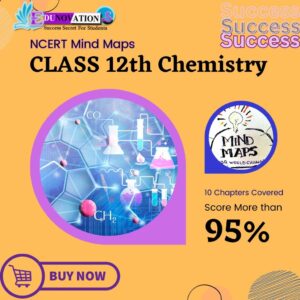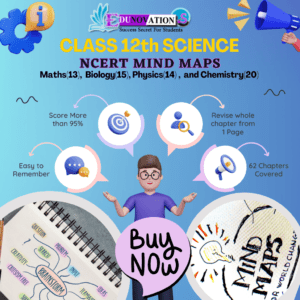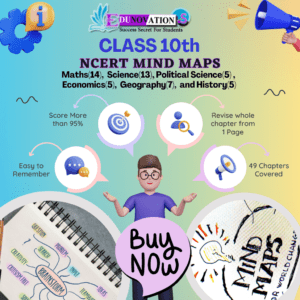Discover how reward expectation influences visual attention sensitivity and bias in humans, revealing critical neuroscience insights into cognitive focus and behavior modulation.
Introduction
Understanding how the human brain manages attention is a foundational question in neuroscience and psychology. Recent research highlights a pivotal factor in modulating attention: reward expectation influences visual attention sensitivity and bias. This groundbreaking insight sheds light on how rewards can enhance or shift our focus, impacting decision-making, learning, and everyday perception.
Researchers at the Indian Institute of Science (IISc) have made significant strides in decoding how reward mechanisms interact with attention systems in the brain, opening new avenues for educational strategies, cognitive therapies, and even artificial intelligence development.
The Science Behind Reward and Attention
Attention, a core cognitive function, enables humans to selectively process important stimuli while ignoring distractions. Traditionally, attention was viewed as a passive filtering mechanism, but contemporary neuroscience reveals a dynamic system influenced heavily by external factors like reward.
The IISc study focuses on differentiating two distinct ways through which rewards modulate attention:
- Sensitivity Enhancement: Increasing the ability to detect or discriminate stimuli.
- Bias Modulation: Altering the preference or likelihood to focus on certain stimuli over others.
By understanding these two mechanisms, we gain deeper insight into how reward expectation influences visual attention sensitivity and bias.
Toppers Use Mind Maps to score more than 95%
NCERT Class 11th Commerce Mind Maps
Add to cartOriginal price was: ₹999.00.₹199.00Current price is: ₹199.00.NCERT Class 12th Chemistry Mind Maps
Add to cartOriginal price was: ₹199.00.₹75.00Current price is: ₹75.00.NCERT Class 12th Commerce Mind Maps
Add to cartOriginal price was: ₹999.00.₹199.00Current price is: ₹199.00.NCERT Class 12th Science Mind Maps
Add to cartOriginal price was: ₹999.00.₹199.00Current price is: ₹199.00.NCERT Mind Maps For Class 10th
Add to cartOriginal price was: ₹999.00.₹199.00Current price is: ₹199.00.
Purchase Today
Distinct Brain Systems at Play
Neuroscientific investigations indicate that distinct brain systems modulate attention through reward mechanisms. The reward system involves structures such as the ventral striatum and dopaminergic pathways, which interact with attention-related areas like the parietal and prefrontal cortices.
The interplay between these systems dictates whether rewards enhance sensory processing or create cognitive biases toward certain stimuli. For instance, when expecting a reward, the brain might increase sensitivity to relevant visual cues or develop a bias that prioritizes specific objects or locations.
These findings hold potential implications for:
- Educational methodologies aiming to improve focus using reward-based incentives.
- Treatment of attention disorders like ADHD through targeted reward modulation.
- Enhancing user experience in technology interfaces by understanding reward-driven attention shifts.
Visual Attention Enhancement Through Reward Expectation
Reward expectation is a powerful driver of attention in humans. The IISc research illustrates that visual attention enhancement through reward expectation in humans is not a uniform effect but rather a complex modulation that depends on the type of reward and the context in which it is presented.
For example, monetary rewards can increase attentional sensitivity, making individuals more accurate in detecting visual stimuli. Conversely, social rewards may induce biases, such as focusing more on socially relevant cues or familiar faces.
This nuanced understanding enables the design of customized reward systems in learning environments and workspaces, improving productivity and engagement.
Cognitive Neuroscience Insights on Reward and Attention Modulation
The study also contributes to broader cognitive neuroscience insights on reward and attention modulation by emphasizing the separation between sensitivity and bias in attentional control.
Key Highlights Include:
- Reward-driven modulation is context-dependent and influenced by prior experience.
- Dopamine plays a critical role in balancing sensitivity and bias mechanisms.
- Neural markers identified can predict individual differences in reward-based attention control.
These insights advance the field of cognitive neuroscience by providing biomarkers for attention-related disorders and paving the way for personalized interventions.
Practical Implications and Future Directions
The discovery that reward expectation influences visual attention sensitivity and bias has numerous practical applications:
- Education: Incorporating reward systems can help tailor teaching methods that boost student focus and motivation.
- Clinical Psychology: Reward-based therapies may enhance treatment efficacy for attention deficits.
- Artificial Intelligence: Designing AI that mimics human attention systems by integrating reward feedback loops.
Future research will likely explore how varying reward types and magnitudes specifically alter attention dynamics, potentially utilizing brain imaging and computational models.
Enhancing Learning Through Reward-Driven Attention
For students and educators seeking to optimize learning outcomes, understanding the role of reward in attention is crucial. Resources like NCERT courses, current affairs updates, and MCQ quizzes can be leveraged with reward incentives to foster better concentration.
Explore these valuable tools here:
Expert Opinions
Dr. Anil Kumar, a cognitive neuroscientist at IISc, comments, “Our findings illuminate how subtle changes in reward expectation can significantly rewire attentional processes. This not only deepens scientific understanding but opens practical pathways to improve focus in everyday life.”
Similarly, Prof. Shalini Rao, an educational psychologist, notes, “Integrating reward systems in educational frameworks can transform student engagement, especially when backed by neuroscientific evidence.”
Conclusion
The relationship between reward and attention is a complex yet fascinating frontier in neuroscience. The IISc research confirms that reward expectation influences visual attention sensitivity and bias, offering profound insights into brain function and practical applications in education, therapy, and technology.
For those eager to delve deeper, a wealth of notes, videos, and syllabus materials on cognitive science and attention are available to complement this knowledge:
Embracing these insights promises not only to advance science but to empower learners and professionals worldwide.
FAQs
- How does reward expectation influence visual attention sensitivity and bias in humans?
Reward expectation can increase both the accuracy of detecting visual stimuli (sensitivity) and shift attention preferences toward certain stimuli (bias). - What are the distinct brain systems involved in modulating attention through reward mechanisms?
The ventral striatum and dopaminergic pathways interact with attention-related brain regions like the parietal and prefrontal cortices. - Can reward-driven attention modulation be applied in educational settings?
Yes, reward systems can be tailored to enhance student focus and motivation, improving learning outcomes. - What role does dopamine play in attention and reward modulation?
Dopamine balances the enhancement of sensitivity and the creation of biases in attention control. - Are there different effects of monetary versus social rewards on attention?
Monetary rewards often increase sensitivity, while social rewards can induce biases toward socially relevant stimuli. - How can knowledge of reward and attention modulation help treat attention disorders?
Reward-based therapies may target specific neural pathways to improve focus and reduce symptoms in conditions like ADHD. - What future research is expected in the field of reward and attention?
Studies will explore varying reward types, magnitudes, and their specific neural effects using imaging and computational models. - Is there a connection between reward-driven attention and artificial intelligence?
Yes, AI systems can be designed to mimic human attention by integrating reward feedback mechanisms. - Where can students find resources related to cognitive neuroscience and attention?
Students can access NCERT courses, notes, videos, and MCQs from educational portals to support their learning. - What practical applications does reward-based attention modulation have beyond education?
It applies to clinical psychology, workplace productivity, and technology design to enhance human focus and behavior.














